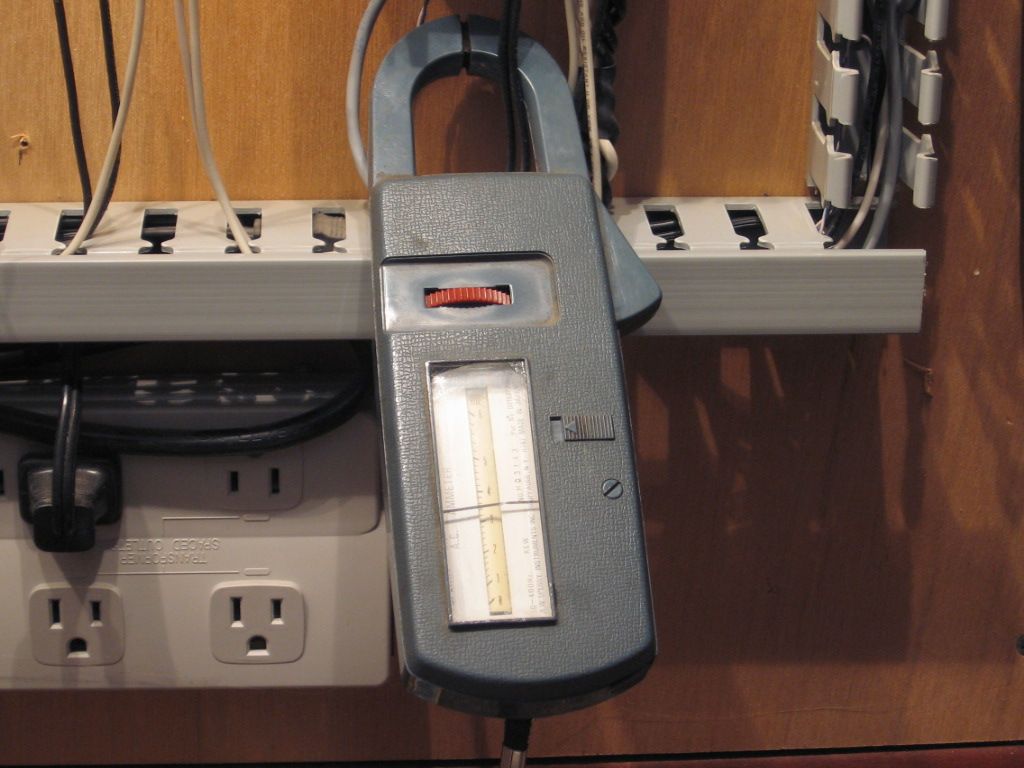This isn't quite what the title might suggest. I think it will interest a few people a lot and others not at all. I posted it here rather than in the electrical section because I think some of those interested won't be into electricity, just interested in the concept.
I welcome all comments, including that I perhaps spend too much time on things like this . . .
Anyway, I did a little thinking about the total amount of power my trains use, including losses in the transformers, etc., when I am am running them. This has become a big topic of conversation in our household. It started when my wife suggested that "your trains probably use more electricity than our car" (we have an electric car). I do spend more time with the trains than driving the car but the short answer is "not even close." Still, I was surprised by how much they use when I computed the estimate below.
This table shows what I think the trains I ran this afternoon consumed. It is my best estimate, 400 watts total for 267 watts measured reaching the trains, and is about typical for what I run on the average day.
This shows the various power sources to my loops and superstreets track on the left, and the trains I ran with each supply. The three columns to the right are, respectively, the power the power supply itself consumes (what would be called no-load losses in power engineering), the power that actually reaches the model train, and the estimated power supply losses that power creates in the power supply when the train is running (what would be called load-related losses). The total comes to 400 watts, which is is an estimate based on: measuring the power used by each running train and SS car fairly accurately, measuring the total power leaving the plug in the wall to the train layout with them all running and with them all shut down, and trying to explain the differences.
My measurements: I can measure fairly accurately the DC power going to each train: measurements in the middle column are within +/- 10% or less. I have only one instrument that will measure AC current. I inherited it from my father. I think it is a 1960's Heathkit although it has no label. It also measures DC current and when doing so fairly well matches modern instruments, but who knows if it is accurate with AC?. Anyway I got 119 volts under load at the outlet when running the trains, and 3 1/3 to 3 1/2 amps when all the trains where running, about 2.3 amp when all were shut down, and a hard-to-read .25+ amps with just the Z4000 running: that seems reasonable though, for no load losses for a 400 watt transformer, the fan, the digital display and electronics, and lights, etc.
- - - I also did the following, set everything running as above and started turning on devices plugged into the same circuit until the 15 amp breaker tripped. A 1500 watt electric heater alone does the trick, but the when set to low (about 1250 watts) it does not, even with along with a map of three 40 watt bulbs plugged in, too.
Anyway, if accurate, this means that only about 2/3 of the power leaving the plug is getting the the trains. That's actually a higher percentage than I expected - I thought it would be less than half.
But to answer my wife: I also have six 23 watt compact florescent lights illuminating the train room, and 6x23= 138 watts more (on another circuit, but still electricity the trains "use" in the bigger sense). So that makes 538 watts. I run about an our a day and maybe three hours a day on weekends, for 11 hours a week, times 4.33 weeks/month, equals 26 kWhr per month.
And yeah, I know I forgot AC power factor completely, but I just decided to do a simple volts x amps here.
Meanwhile our Chevy Volt has a lifetime plug-to-pavement average of almost exactly 3.0 miles/kWhr. I drive about 800 miles a month so that is 266 kWhr per month, or almost exactly ten times more power than my estimate for the trains. Actually, I'm surprised the trains use anywhere near 1/10th as much as the car does.






